5. Psycho
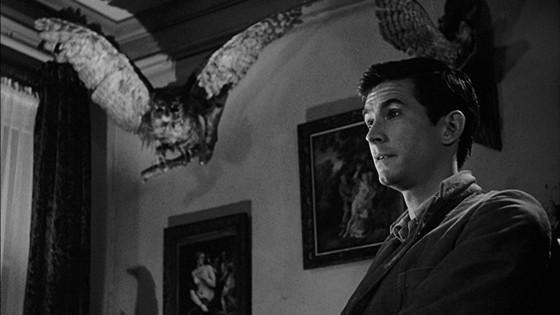
Psycho is in many ways a pioneering film and one with a rich and interesting history. Alfred Hitchcock’s magnum opus managed to subvert expectations by having what was assumed to be its main protagonist murdered before the midpoint of the film.
Its final twist was so unpredictable that it made Hitchcock enforce that nobody could walk in the theater after the film had started, something unheard of at the time. What makes Psycho so successful in pulling off the final surprise of Norman Bates having murdered his own mother, is an incredibly tense dialogue between Norman and Lila that takes place right before she dies.
During this masterfully written scene, Norman explains his fascination with taxidermy before the conversation drifts to his mother and the serious issues he has with her. Anthony Perkins’ excellent performance exhibits jealousy for his mother’s fiancé whilst alternating between innocence and menace, a classic sign of a psychopathic individual.
He keeps talking about his mother’s illness, which refers simultaneously to her death as well as him projecting his pathology on her. He stresses that if he ever left his mother the room would be “cold and damp, like a grave” and that she is “as harmless as one of those stuffed birds”. The ominous feeling of the scene is reflected in Lila’s decision to leave the room immediately and can be viewed as an adumbration of the story’s conclusion.
4. Jurassic Park
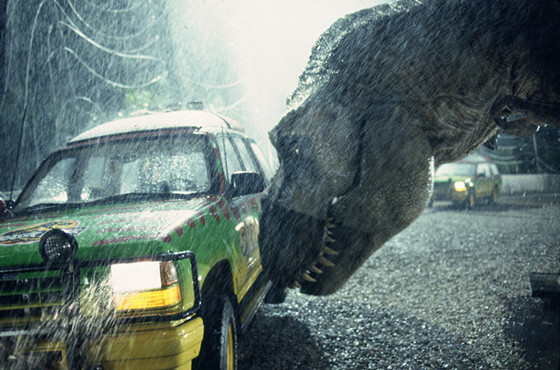
Spielberg’s iconic ‘90s thriller about the revival of dinosaurs was not only a lesson in practical effects but also an example of brilliantly subtle foreshadowing. The island on which the film takes place is secluded as a precaution for the unprecedented experiment that is taking place there.
However, that is just one of the protocols in place to ensure the safety of the park. As biologists have engineered the dinosaur DNA themselves, they made sure to produce an all-female population as to exclusively control the breeding process.
As expected, eventually protocols start failing and mayhem occurs. Perhaps the biggest surprise comes when Grant discovers eggs in the forest, affirming Malcolm’s saying that life finds a way. If you paid close attention to the beginning of the film, you may have suspected that already, if you saw past a seemingly unimportant scene and looked at the deeper meaning.
When the scientists are transported on the island via helicopter, they all have to fasten their seatbelts for the landing. Grant realizes his seatbelt’s tongue is missing and he has two buckles instead. After a bit of fumbling, he finds a way by tying them together, thus completing a perfect metaphor concerning the film’s future reveal.
3. Total Recall (1990)
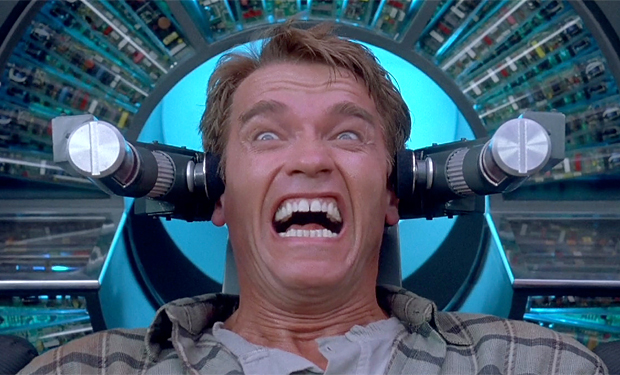
Paul Verhoven’s sci-fi thriller, based on Philip K. Dick’s short story, has earned the status of a cult favorite which even led to a remake two decades later. Douglas Quaid needs some vacation, so he visits Rekall, a corporation artificially planting false memories into people’s minds as a means of escapism.
Quaid’s unorthodox request is to visit Mars, but once he is strapped on the machine, something goes wrong. What follows is an action packed romp that keeps audiences guessing whether what we see is really happening or whether it is part of the implanted memories.
In the end, Quaid finds himself in Mars along with Melina as the planet terraforms. Blue skies emerge, the couple seems unconcerned with whether what they are experiencing is real and the credits start rolling.
The end may seem open ended at first glance but that doesn’t seem to be the case if you pay very close attention to a scene at the very beginning. While Quaid is waiting to have his memory chip installed, the lab assistant in the background can be heard saying “Blue sky on Mars? That’s a new one.”
Add to this that the film fades to white instead of black (a typical sign of a dream) and you will agree that Total Recall not only gave us a concrete ending which wasn’t left up to the viewer to interpret, but that it respected its audience by ingeniously hiding the clue pointing to it in an inconspicuous blink-and-you-missed-it moment.
2. Shutter Island
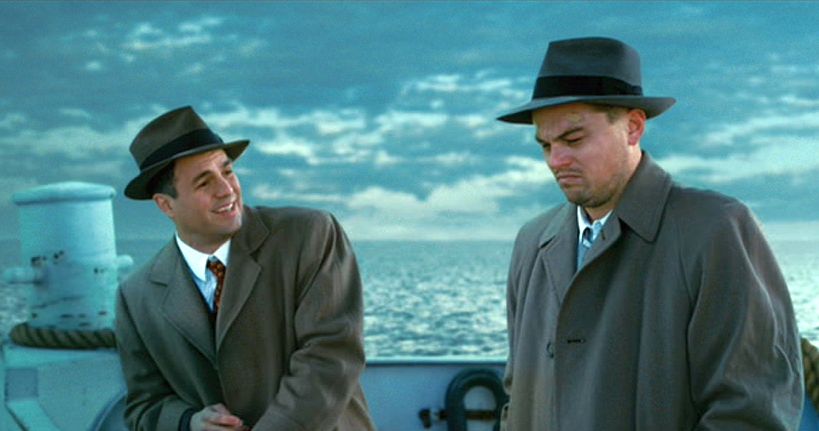
In the early 2000s, Martin Scorsese and Leonardo DiCaprio, two of the biggest names in contemporary cinema, came together for the first time. This collaboration set the stage for a number of great films that followed and perhaps many to still come. Arguably the best product of this partnership has been Shutter Island, a mystery exploring the depths of insanity whilst toying with the concept of reality.
Set in the 50s, Shutter Island follows two US Marshals who travel to a secluded island that is home to a hospital for the criminally insane, investigating the disappearance of a patient. After a series of mysterious events and visions relating to his own past, Marshal Edward Daniels is revealed to be himself a patient at the hospital. The events of the film had been a carefully designed experiment to snap him out of his delusion and help him come to grips with the terrible crime he committed.
Although the film features various clues that can help you piece together the final twist throughout its run time, the first scene that takes place on the hospital grounds offers a clear outline of the plot. When the supposed US Marshals have the protocol regarding their investigation explained to them at the gate of Ashecliffe Hospital, there is a series of subtle hints (complimented with great acting) that indicate what is about to come.
The guard explains to Daniels and his partner Aule that Ward C is off limits and Daniel’s comment “You act like insanity is catching”, followed by a wry smile from the guard, cleverly foreshadows the reveal that he is indeed a patient of the asylum. A few moments later, the Marshals are asked to surrender their firearms in order to enter the penitentiary. Both the guard and Aule stare intently at Daniels waiting to see his decision.
It starts to become clear that there is an unspoken connection between Daniels’ partner and the guard. This becomes even more apparent when Aule fumbles for several seconds trying to remove his holster (something very uncommon for an experienced man of the law) and the camera focuses on the guard whose eyes roll like somebody just messed up their part. Even Daniels picks up on this, giving his partner a look of wonder and suspicion.
These clues lie in visual cues during passing moments at the beginning of the film, but upon revisiting Shutter Island you are sure to scratch your head and marvel at the subtlety implemented by Scorsese during this scene.
1. Fight Club
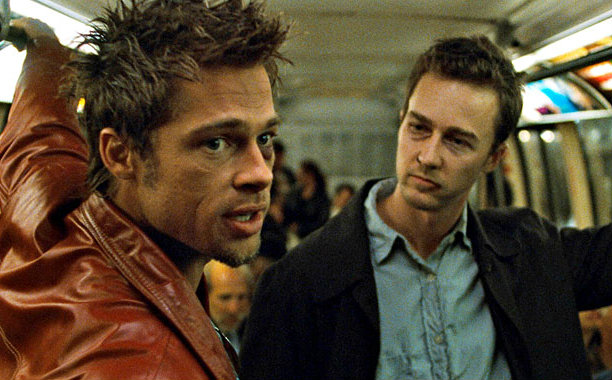
There’s subtle foreshadowing and then there’s Fight Club. The plot twist of Fincher’s adaptation of Palahniuk’s novel is one of the most well-known among film fans. The genius that lies within the cult classic is a combination of the absurdity of its near end reveal and the fact that it was always hiding in plain sight. As a result, Fight Club becomes a different film the second time you watch it, one that mainly has audiences shocked at how they didn’t see the end coming a mile away.
The number of times the film hints at Tyler Durden’s nonexistence is mesmerizing, to the point where the word hint is not the right one to use. From subtle visual cues of bus passengers not acknowledging he is there, his presence in TV commercials or having the Narrator blatantly say “If you wake up at a different time, in a different place, could you wake up as a different person?” while the camera slides from him to Tyler, everything in Fight Club is a premonition of what’s about to come.
Other lines like “Sometimes Tyler spoke for me” and “For some reason I thought of my first fight… with Tyler” while the Narrator is beating himself up, just add to the frustration of not discovering the twist early on.
However, there is one ingenious technique used at the start of the film that deserves special mention and that is the Tyler cuts. During the first 30 minutes, and before we are even introduced to Tyler’s character, he is cut into 6 different scenes for a split second.
This happens while the Narrator’s insomnia is the main plot point and it is a clear indication of him beginning to hallucinate. To add insult to injury, this technique is explored later the film with Tyler splicing frames of male genitalia in kid movies, in a meta moment that serves as Fincher’s big cosmic joke.